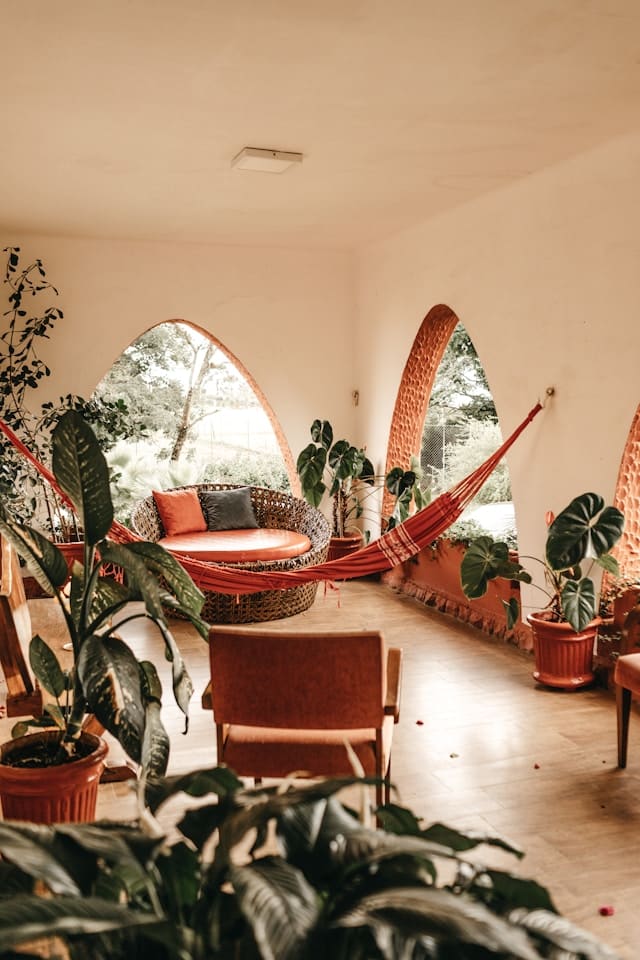Indoor gardening has become a popular trend among plant enthusiasts and beginners alike. It offers a viable solution to those with limited outdoor space or variable climate conditions. One of the most rewarding indoor gardening projects you can embark upon is growing your own herbs. With the right approach, you can enjoy fresh, homegrown herbs all year round. This article will guide you on how to grow a small space herb garden indoors using LED grow lights.
Understanding the Basics of Indoor Gardening
Before plunging into the specifics of growing herbs indoors, it’s crucial to understand some basic principles of indoor gardening. Indoor gardening relies on artificially replicating the conditions necessary for plants to flourish. From light to water, soil to temperature, each component plays a significant role in the success of your indoor garden.
Also to discover : How Can You Optimize Storage in a Tiny Entryway with Clever Built-Ins?
LED (Light Emitting Diode) grow lights are one of the best options for indoor gardening. They provide a full spectrum of light that herbs need to photosynthesize. By carefully placing these lights over your plants, you can simulate the natural sunlight that outdoor herbs enjoy. LED lights also generate less heat and are more energy-efficient, making them ideal for indoor use.
When it comes to watering your indoor plants, bear in mind that overwatering is a common mistake. The amount of water your herbs need will depend on the type of herb, size of the pot, and the soil used. Always check the moisture level of the soil before watering.
Also to discover : What’s the Best Strategy for Child-Proofing an Art Studio Space?
Choosing the Best Herbs to Grow Indoors
When starting your indoor herb garden, the choice of herbs is vital. Some herbs thrive better indoors under LED lights than others. The best herbs to grow indoors are those that have modest light and water requirements.
Basil, parsley, chives, thyme, oregano, and mint are among the easiest herbs to grow indoors. These herbs are resilient and adaptable, making them perfect for an indoor garden. Basil, for instance, thrives under LED lights, as it requires a good amount of light each day. Mint, on the other hand, can grow even in slightly shady conditions, making it a versatile choice for indoor gardening.
Prepping the Pots and Soil for Indoor Herb Gardening
The pot and soil in which you plant your herbs significantly affect their health and growth. A common mistake among beginners is using regular garden soil for indoor plants. Garden soil might contain weed seeds, insects, and diseases and it can become compacted when used in a pot.
Opt for a high-quality potting mix designed for indoor plants. This type of soil is sterile, lightweight, and well-draining, which is perfect for herbs. When it comes to pots, ensure they have adequate drainage holes. Excess water needs a place to escape, or else your herbs will be vulnerable to root rot.
Setting Up LED Grow Lights
LED grow lights are the spotlight of your indoor garden. They ensure your herbs receive sufficient light to grow healthily, especially in spaces that don’t get a lot of natural sunlight. If you’re new to LED lights, you might find the various types and specifications a bit overwhelming.
Generally, full-spectrum LED lights are the best choice for indoor herbs. They cover all light spectrums necessary for photosynthesis. The lights should be positioned about 6 to 12 inches above the plants. Too close can cause the plants to burn, while too far away won’t provide enough light.
You can opt for LED grow lights with adjustable height features. This will allow you to change the light intensity as per the growth stage of your herbs.
Caring for Your Indoor Herb Garden
Once your indoor herb garden is set up, ongoing care is crucial for your herbs’ survival and growth. Regular watering, pruning, and rotation of pots are necessary to ensure even growth and prevent diseases.
How often you water your herbs depends on the type of herb and its growth stage. However, a good rule of thumb is to water when the top inch of soil feels dry to the touch. Overwatering can lead to root rot, which is often a death sentence for herbs.
Pruning is another important aspect of indoor herb gardening. Regular trimming encourages bushier growth and prevents your herbs from becoming leggy. Use a sharp pair of scissors or shears to prune your herbs, cutting just above a set of leaves.
Finally, remember to rotate your pots every few days. This will ensure all sides of your plants get an equal amount of light, promoting balanced growth.
Growing herbs indoors with LED grow lights is a rewarding hobby, not to mention the culinary benefits you can reap from having fresh herbs at your fingertips. With these tips, you’re now equipped to start your journey into the world of indoor herb gardening.
Advantages of LED Grow Lights for Indoor Herb Gardens
LED grow lights have transformed the indoor gardening scene with their numerous advantages. Firstly, they are energy-efficient. They consume less power compared to other types of grow lights, which makes them cost-effective in the long run. Secondly, they provide a full spectrum of light, similar to the sun, which is essential for photosynthesis. This makes them ideal for indoor herb gardens.
LED grow lights also have a longer lifespan. Most LED lights can last up to 50,000 hours, which is far superior to other types of lights. In addition, they produce less heat, reducing the risk of burning the plants. However, it’s essential to maintain the right distance between the lights and your herbs. Placing the lights too close can cause damage, while positioning them too far will not provide enough light.
An added feature of some LED grow lights is their adjustability. Adjustable lights allow you to control the light intensity and height. This becomes necessary as the herb plants grow larger and their light requirements change. Therefore, adjustable LED grow lights can be an excellent investment for your indoor herb garden.
Troubleshooting Common Issues in Indoor Herb Gardening
Despite your best efforts, you may encounter some common issues when growing herbs indoors. Learning how to identify and address these problems can help ensure the health and productivity of your herb garden.
One of the most common issues is overwatering. Too much water can lead to root rot, a condition that can quickly kill your herbs. If you notice yellowing leaves or a foul smell coming from the pot, it could be a sign of root rot. It’s important to let the potting soil dry out between waterings to prevent this.
Lighting can also be a problem. If your herbs do not get enough light, they may become leggy and weak. This is where your LED grow lights come in. Adjusting the position and intensity of your lights can help ensure your herbs get the full sun equivalent they need.
Pests and diseases can also pose a challenge. Regularly check your plants for signs of infestations and treat accordingly. Using a high-quality, sterile potting mix can help prevent diseases, while physical removal and organic pesticides can manage pests.
Despite these challenges, don’t be disheartened. Remember, indoor herb gardening is a learning process. With time and experience, you’ll be able to successfully grow a vibrant and productive indoor herb garden.
Conclusion
Creating an indoor herb garden with LED grow lights is a rewarding endeavor. It allows you to cultivate a wide variety of herbs right in your home, regardless of space or weather constraints. For those with a green thumb or just starting their gardening journey, an indoor herb garden is a great way to enjoy fresh herbs all year round.
Remember, the key to a successful indoor garden is understanding the basics, from choosing the right herbs to using an appropriate light system and soil. Take the time to learn about each herb’s needs and adjust your care accordingly. With patience, attention, and the right resources, you’ll be able to enjoy the fruits of your labor and add a touch of freshness to your meals with your homegrown herbs.
In conclusion, grow lights have revolutionized indoor gardening, making it more accessible and efficient. They allow us to grow herbs indoors, providing the necessary light spectrum in a controlled and efficient manner. The availability of fresh herbs throughout the year is a delight for any home cook and a testament to the marvels of modern gardening technology. Get your LED grow lights and start your indoor herb garden today.






